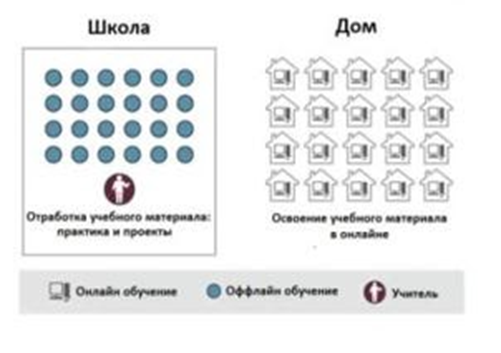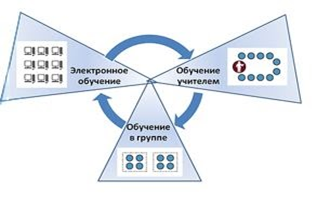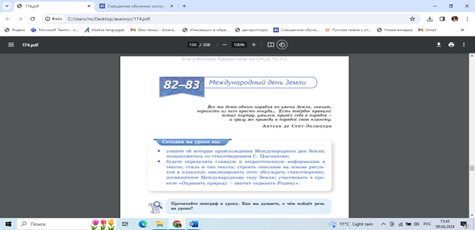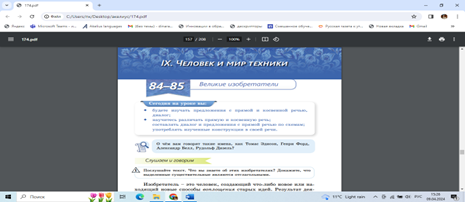Language and methodological experts from IITU planned and conducted a series of training sessions from May 6 to 11 on the topic "Blended Learning Tools: Designing a Lesson" using the ZOOM online platform. Teachers from schools in Shymkent, Astana, and Almaty, involved in a project to improve literacy among children who do not speak Russian, participated in the training sessions.
The leading speakers of this training were Dinara Aliyeva, Candidate of Pedagogical Sciences, Associate Professor of the Department of Languages at IITU, specializing in the Russian language, and Ainur Suranchina, Senior Lecturer and expert on Student Voice at the Almaty University of Energy and Communications, specializing in English.
Dinara Aliyeva notes that blended learning is one of the most innovative and progressive areas in modern education. According to her, "There is a general scheme for the blended learning model. Interestingly, blended learning was not so popular in the past and was used either in schools for gifted children (for example, at the Stanford School for Gifted Children) or in schools for children with disabilities. Only in recent years has it become a full participant in the educational process."
In general, methodological experts consider several main trends in blended learning in 2024:
- Introduction of artificial intelligence
- Artificial intelligence simplifies the lesson development process
- Learning Experience Platforms
- Social learning
- Easy-to-use high-quality content
The training, lasting 60 minutes, focused on practical work with teachers. Experts presented the advantages and possibilities of organizing a lesson in a blended learning format. As Dinara Aliyeva explains, "There are various options for blended learning. There are rotary models. They assume that there are some points (stations) that students visit. The visit can be group, individual, clearly organized, or organized according to some individual plan. The most understandable and well-known model is the flipped classroom model, which assumes that there is learning at school and at home. At home, students get acquainted with educational material online, and at school, they put it into practice in projects and active learning. It is also possible to work on this material at home. But in any case, in a flipped classroom, we assume that the student is working online at home and actually getting to know the new learning material. This model is very common. For example, in France, there is an Association for the Flipped Classroom."
Dinara Aliyeva emphasized that it is important to understand that reading the textbook on your own is a seemingly simple task. But when a teacher simply offers to read a textbook to a student, nothing changes compared to a traditional lesson in a traditional school. The difference is that in a flipped classroom, they begin to use various options for online interaction with the student to understand what they did at home and build their interaction in the classroom based on that. To do this, you can use various surveys, tests, and give interactive tasks. They allow the teacher to see who actually read and understood the material.

As the language expert summarized, "For example, if you gave a textbook to read at home, then you gave some questions to this textbook and then looked at which of the children would answer these questions. As a result, you can understand how to structure a lesson considering that you have a part of the children who have done something and are really ready for the lesson, and a part of the children who are not ready. You know who to offer what and include children in activities in different ways."
Ainur Suranchina noted that the following model, "Station Rotation" is convenient if the study of a topic involves different types of activities within one lesson. Then the types of activities alternate not simultaneously for the whole class but for groups of children at a certain pace. The content of the activity is determined by the teacher. The activities of students in work zones can be compared to pieces of a puzzle. By putting them together (having gone through all the work zones), the student gets a complete picture.

Dinara Aliyeva notes that RAFT technology is a pedagogical technique aimed at creating written texts on a certain topic according to the formula:
R – Role |
A – Audience |
F-Forma |
T-Topic |
Determine the role, you should find out who can reveal a given topic |
Find out who this text can be intended for |
Choose a genre and form of narration |
Choose a topic to determine what the text will be about and what main ideas will be revealed in it |
According to Dinara Aliyeva, "This method teaches schoolchildren to consider a topic from different sides and points of view, teaches writing skills, is one of the ways of teaching critical thinking, forms a system of judgments, and promotes the ability to analyze and formulate conclusions."
In the practical part of the training, experts suggested that teachers try to design a lesson in the proposed groups:
Group 1: Station Rotation Model. Lesson 82-83. International Earth Day.

Group 2: RAFT. Lesson 84-85. Great Inventors.

Group 3: Flipped Classroom. Lesson 83-84. Smart Things.
At the end of the training, Dinara Aliyeva and Ainur Suranchina received feedback from the teachers.
"I believe that our 3-day training was quite successful, primarily due to the fact that the majority of participants were interested and involved in the teaching process, and were also active and carried out assigned tasks during the training," concluded the project coordinator, Zhannura Manapbayeva.
